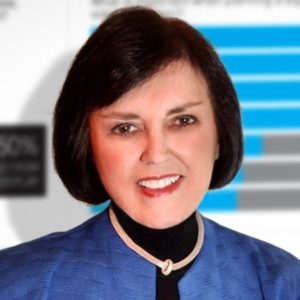OTHER NEWS
The Learning Center
Our Learning Center ensures that every reader has a resource that helps them establish and maintain a competitive advantage, or leadership position. For instance, loan originators and brokers will have one-click access to resources that will help them increase their productivity. Search topics by category and keyword and generate free videos, webinars, white papers and other resources. If you would like to add your content to the learning center, please click here or email Tim Murphy at [email protected].
Millennials Handle Homeownership by Taking Advantage of Refinance Opportunities
- Wednesday, 05 June 2019
- Originating

Average interest rates on all 30-year notes to Millennial borrowers declined in April 2019, spurring an increase in refinance loans from members of the generation looking to take advantage of lower rates. According to the latest Ellie Mae Millennial Tracker, the average 30-year note rate declined to 4.61% in April, down from 4.75% in March 2019. With this drop, the percentage of refinance loans increased 4% month-over-month, from 11% in March to 15% in April, the highest share since February 2018.
Interest rates on Conventional, FHA and VA loans all decreased month-over-month for Millennials in April. Rates on Conventional loans decreased from 4.7% to 4.55%, FHA loans fell from 4.84% to 4.71% and VA loans dropped from 4.36% to 4.21%. Shares of refinances in the three loan categories increased from March to April. Conventional loans saw the biggest surge in share of refinances, jumping from 13% to 17%, while FHA refinances rose from 5% to 6% and VA refinances increased from 27% to 28%.
 Time to close for all loans dropped to 39 days, the lowest figure since February 2015. The decrease in time to close was driven in large part by a six-day decrease in time to close for refinances, which, on average, closed faster than purchase loans for the first time since March 2016. Refinances closed in 36 days compared to 38 days for purchases.
Time to close for all loans dropped to 39 days, the lowest figure since February 2015. The decrease in time to close was driven in large part by a six-day decrease in time to close for refinances, which, on average, closed faster than purchase loans for the first time since March 2016. Refinances closed in 36 days compared to 38 days for purchases.
“Interest rates continued to drop in April and Millennials jumped on the opportunity to refinance,” said Joe Tyrrell, executive vice president of strategy and technology at Ellie Mae. “The significant drop in time to close shows homebuyers were motivated to close refinances while rates were low, and that Millennials are showing increased maturity as a homeowning demographic. On top of external factors, an increased investment in technology by many lenders is creating a more efficient mortgage process.”
For all loans closed in April, 69% were Conventional and 26% were FHA, while VA and other loans accounted for 2% and 3% respectively. Conventional loans closed in 39 days compared to 40 days for FHA and 46 days for VA.
“Millennial homebuyers continue to show a strong preference for Conventional loans,” added Tyrrell. “There’s an opportunity to educate Millennials on alternate loan types, including FHA loans, which allow for smaller down payments, making homeownership more accessible. There is no one-type-fits-all loan, so it’s vital that all borrowers have a firm understanding of the various loan options available and communicate with their lender to make the decision that is right for them.”
The average FICO score for Millennial borrowers was 721 in April, up from 720 the previous month and average age dropped to 30.2, down slightly from 30.3 in March. For those refinancing a Conventional loan, the average FICO score was 745, the highest mark since December 2016, while the average scores for those refinancing FHA and VA loans were 670 and 718, respectively.
About the Ellie Mae Millennial Tracker
The Ellie Mae Millennial Tracker focuses on Millennial mortgage applications during specific time periods. Ellie Mae defines Millennials as applicants born between the years 1980 and 1999. New data is updated on the first Monday of every month for two months prior. The Millennial Tracker is a subset of our Origination Insight Report, which details aggregated, anonymized data pulled from Ellie Mae’s Encompass origination platform. Additional information regarding the Origination Insight Report can be found at http://elliemae.com/resources/origination-insight-reports. News organizations have the right to reuse this data, provided that Ellie Mae, Inc. is credited as the source.
Read more...The Changing Role of Loan Officers
- Wednesday, 29 May 2019
- Originating

By Pat Sherlock, President of QRS Sales Solutions.
Last week at the NY Secondary Market conference, most of the sales executives I met with asked, "What is the most important issue going forward for the industry?" My response I think will be surprising to many. While improving the manufacturing part of the process is important and long overdue, I believe our real challenge is changing our selling approach on the origination side of the business.
As Laurie Goodman, Founder and Co-Director of the Housing Finance Policy Center, Urban Institute, discussed at the conference, lack of supply at the lower end of the market is only 24.5%, but rises to 44.8% at the high end. The supply issue is not going away and is compounded by homeowners now aging in place.
[caption id="attachment_9789" align="alignright" width="300"] Pat Sherlock[/caption]
Pat Sherlock[/caption]
What does this mean for lenders? The obvious answer is to reduce costs in a market that will continue to have profitability challenges since refinancing will not be available to bail lenders out, according to the MBA's Chief Economist Mike Fratantoni. For the industry, this means that lenders will be fighting over customers for the foreseeable future. Sales organizations will be tasked with revising reactive and transactional strategies to become proactive in creating loan demand and reaching out to prospects much earlier in the buying process.
Lenders and originators must put in the effort to be top of mind for prospects and referral sources. Sales organizations that fail to create brand awareness will be doomed to working deals that fall out from other lenders. This strategy is difficult to survive on because investors can change their buying guidelines on a dime. For originators, developing personal brand awareness pays off in terms of reaching consumers first. Industry research shows that nearly 70% of consumers complete their transaction with their initial lender/originator.
What I see in the field when conducting sales audits is that personal brand awareness is often a foreign concept for originators. While lenders believe that the originator must do whatever it takes to generate business, many originators think that their job is about getting exceptions to underwriting guidelines and not necessarily marketing to expand their sales funnel.
Traditional marketing and selling roles are collapsing in today's world of retail sales. While both have the goal of generating a sale, marketing has been defined as creating a favorable awareness for selling to take place. As one marketing executive said to me, "marketing is the turbo charger of what the originator is already doing." Marketing works best when the originator is performing prospecting activities. If originators aren't prospecting, no amount of marketing can save them.
To succeed in a more difficult financial landscape, originators must perform the roles of marketer and sales professional to effectively target prospects. To accomplish this, originators must build awareness of their services with consistent prospecting efforts that not only reach more consumers than before but with a greater frequency to capture people's attention. The silver lining here is that an individual salesperson has a better chance of making a positive impression than a company due to consumer's perceptions that companies do not have their best interests at heart.
While consumers seem to have little faith in corporations, they still believe in other people. Whether it is peer ratings or Facebook groups, individuals are interested in what other people have to say and recommend. People still love sharing their life, information and experiences with other people. All of this means that originators must market themselves and scale their personal brand using communication tools.
While many lenders are going down the path of reducing credit standards, hoping that will solve the production issue, forward-thinking sales executives must re-think what responsibilities should be performed by the sales force and make adjustments accordingly.
Management teams should ask themselves whether an originator who doesn't market themselves and their personal value proposition keep their position? When interviewing originators, hiring managers should look for sales candidates who not only possess sales talent but are actively marketing on Facebook, LinkedIn or YouTube. They need to demonstrate that they are adept at using today's communication tools to create personal brand awareness. If not, they don't match what you need in the selling position.
Read more...Getting Started with Social Media in the Mortgage Industry
- Monday, 27 May 2019
- Originating

Ben Smidt, MA, Digital Strategy Manager, MGIC
Getting started with social media in the mortgage industry can be daunting. I get it, and I understand your perspective. Having talked to thousands of mortgage loan officers and real estate agents over the past few years, I hear a lot of the same things. You clearly see the value in social media, but you’re not clear on the best way of getting started with social media in your industry. Below are some of the easiest and best social media tips I have on how you can use social media to increase your business growth, in a simple, efficient way across Twitter, Facebook and LinkedIn.
Before you decide to post or take action, check out your company’s social media policy and consider social media through the lens of How can I help? or How can I provide value without selling? This is what social media is about, whether you gain business from it or not. Never talk about the Hot-Button Issues – money, politics and religion. If we all avoid these topics, we could all be friends. The goal of social media is to build relationships, not destroy them.
[caption id="attachment_12084" align="alignright" width="110"] Ben Smidt, Digital Strategy Manager for MGIC[/caption]
Ben Smidt, Digital Strategy Manager for MGIC[/caption]
Getting started with social media in the mortgage industry is challenging, so let’s start with one of the harder platforms for mortgage loan officers to grasp – Twitter. One thing I discovered early on in my digital marketing career at MGIC is, the financial services industry was much less likely to use Twitter, and more important, there was concern about the regulatory risks of “saying the wrong thing.”
As a result, I have found the best way to leverage Twitter in the mortgage industry is to use it as a listening tool. By doing so, the mortgage loan officer takes compliance concerns out of the picture completely. More important, as a loan officer you have the ability to keep your finger on the pulse with industry news outlets, current customers, referral partners and prospects you hope to win more business from.
I approach this concept with the simple idea of using Twitter notifications. A Twitter notification enables a Twitter user to be notified on any device when someone they follow (and have notifications turned on for) tweets.
Let’s unpack this idea.
Twitter built its brand on being the first to know. If you, as a mortgage loan officer, are the first to know an industry change or something that may affect a current mortgage customer or referral partner, you are the first to take action and capitalize on the change. Think about the value proposition in monitoring news outlets on Twitter. Their breaking news alerts are almost always pushed to Twitter first. This helps you keep your finger on the pulse. The same is true for current customers or referral partners you choose to follow and place on notifiers. By doing so, you may discover it’s someone’s birthday or wedding anniversary. What a great opportunity to send flowers or a note. That personal touch and staying top-of-mind is how you get more referral business from those individuals.
Pro Tip: Keep the number of people, companies, brands you have on notifiers to a reasonable amount. Depending on their tweeting frequency, you may get inundated with notifications. Good news, though, it’s just as easy to turn them off as it is to turn them on.
For all the talk of Facebook having lost its appeal with key demographics like Millennials, you still can’t ignore the fact that 2.2 billion people are actively using the platform every month. Let’s explore what you can do right now when getting started with social media in the mortgage industry on Facebook to help you drive digital word of mouth (DWM) with current customers and referral partners in the mortgage industry.
When mortgage loan officers ask me what they should consider posting or what activity they should be doing on Facebook, I start by asking them what they are doing right now, face-to-face with referral partners. If you’re looking for content to post on social media, start with what you’re already doing and simply move it to a social platform, like Facebook. Take those activities and transition them to the social space to help expand your digital footprint across social media.
Here are my 3 favorite ways to leverage Facebook for business as a mortgage loan officer when you are getting started with social media in the mortgage industry.
1. Lunch ’n’ learns:
If you are a savvy loan officer, you’re already doing lunch and learns with your referral partners. But why not complement the live event with a social (Facebook) component? Snap a few photos of the event, post to your Facebook Business Page, tag your pictures with all the people who attended and are also on Facebook and mention the location of the event. Right away you have several people interested in the success of your Facebook post because you mentioned your location and tagged the people you’re with. They’re now all more likely to engage (like, comment, share) with your post. This will help increase your visibility organically across the Facebook platform.
2. Listings:
If you have established real estate referral partners you work closely with, why not post one of their listings on your Facebook Business Page? I recommend one new listing from a different real estate referral partner once a month. (Spread the love around.) We are a visually oriented culture. We love pictures; they are a universal language. By supporting your real estate referral partners with a simple post like this on Facebook, you’re helping to spread the word across the social space. It helps a broader audience discover a potential home. And in return, I’m sure those same referral partners wouldn’t mind posting about your services to their respective audiences on their Facebook page.
3. Closings:
This is my favorite tip for mortgage loan officers who want an easy way to expand their visibility with warm leads. Next time you go to a closing of a really great customer, before you snap the classic picture of the happy homeowner on your camera, stop and ask them to use their camera for the photo. Why? Because then you can suggest when they post it out to their friends and families, they tag you in the post. Anyone on Facebook knows the posts that get the most amount of engagement are the posts about getting married, having a baby and buying a house. This is free advertising to all the homeowners’ friends and families.
There are so many ways to leverage Facebook to help generate business. Let your imagination run wild. But focus most on what’s happening in the community you serve and what you’re already doing that could work on the social channel.
Pro Tip: Create a Facebook group about the many things to do in your community. In creating a beneficial Facebook group that general users can find and join, you’re creating a pool of warm leads you can draw from and leverage for future business opportunities.
There’s a misunderstanding out there that you don’t need to care about Linkedin when you’re getting started with social media in the mortgage industry. That’s just not true. LinkedIn is a huge opportunity to grow your business. I call it your “modern day business card” for a reason. In fact, I don’t carry business cards anymore and instead connect with prospects and business partners directly on the spot. The reason is, referral business is the best way to acquire qualified sales leads.
LinkedIn is the largest professional social media platform out there. One way to approach this concept is to look closely at your profile on LinkedIn. Do you know what your personal brand is? Does your LinkedIn profile reflect it? LinkedIn is the outlet to highlight who you are as a business professional, so make it strong. There are some quick-hit areas of your LinkedIn profile you can modify to improve peoples’ perception of you and increase your visibility to a larger audience.
Here are my 3 favorite areas of a LinkedIn profile to modify when you’re getting started with social media in the mortgage industry.
1. Headshot/Headline/Background Image:
First impressions matter. If a potential borrower who has only communicated with you by phone looks you up on LinkedIn to evaluate you, what first impression as a business professional will you give? A nice business headshot helps to establish a positive first impression. Additionally, the headline is one of four areas in your LinkedIn profile that is weighted higher in search. Consider using key terms to help those searching to find someone like you find you. Branding yourself in the digital space is important. Does your background image reflect what you care about in the community you serve? Are you highlighting who you work for? Consider adding an image that represents your personal brand.
2. Summary:
Your summary section is important because it sits high on your profile page. This means anyone looking to evaluate you as a professional in your industry is more likely to absorb the information you’re sharing. The summary is also only one of two locations you can add media-rich content to your profile. Think about adding website links, PDFs, videos or images to reaffirm to a visitor who you are and what you bring to the table as it relates to your personal brand. Add important key terms you want to be found for in this section as well. It will help strengthen your profile around those terms.
3. Endorsements:
Many people used to think the endorsements/skills section of LinkedIn was a bunch of fluff. Indeed, it was. However, LinkedIn has changed this. This area of your LinkedIn profile is now the second-highest area weighted in search. The way it shakes out is, the term or terms you choose to list and the number of times you’ve received an endorsement is how the weighting is placed. So again, think about those key terms you believe consumers or referral partners are using in search to find someone like you and include them in this section. Take it a step farther and work to have co-workers endorse you for these listed skills.
These quick-hit improvements to your LinkedIn profile will help to increase your visibility in Google Search and LinkedIn search and help reduce doubt with those who land on your profile page, evaluating whether they want to do business with you. Your personal brand matters, and LinkedIn is a great opportunity to solidify it on a professional social media platform.
Pro Tip: Organize a group outing with valued customers or referral partners to tour and taste the best of something in your community … craft beer at several breweries or the best wings, tacos, gyros, burgers … the ideas are limitless. At the end of the day, have them vote on their favorites. It’s a great way to support your local community and build relationships with those who can send that valuable word-of-mouth business. Leverage video to capture the fun moments and the results to share on social media.
There’s no simple way to getting started with social media in the mortgage industry, but the social media tips I’ve shared with you will help build the foundation to a successful, meaningful experience on a variety of social media platforms in the mortgage industry. Remember to start small and stay focused on the social media sites you believe your customers, referral partners and prospects are using. Manage your time accordingly, try the suggestions, measure what works and then re-evaluate. You never know what’s possible with social media until you take the leap.


